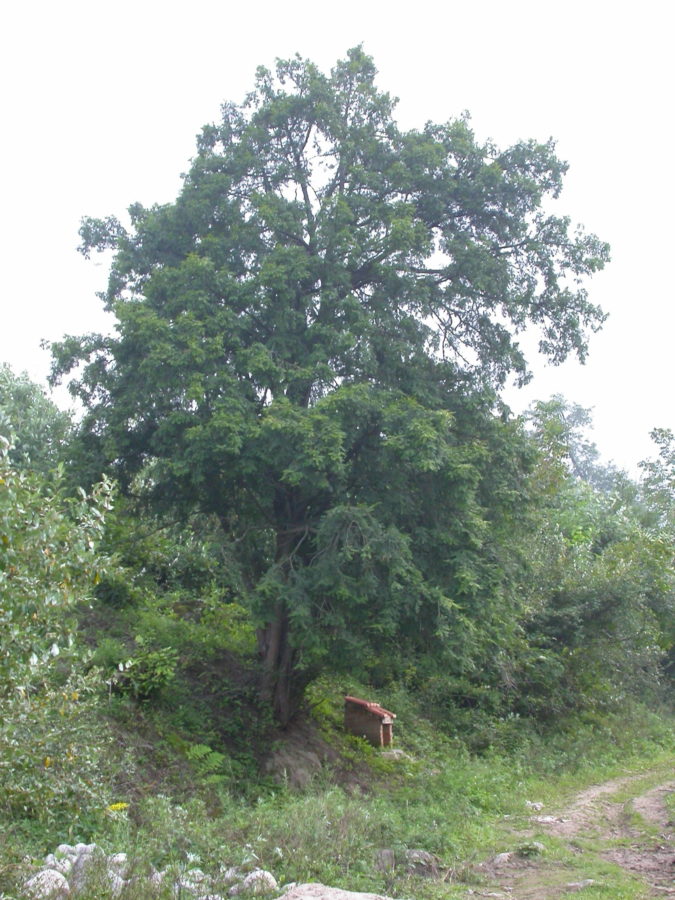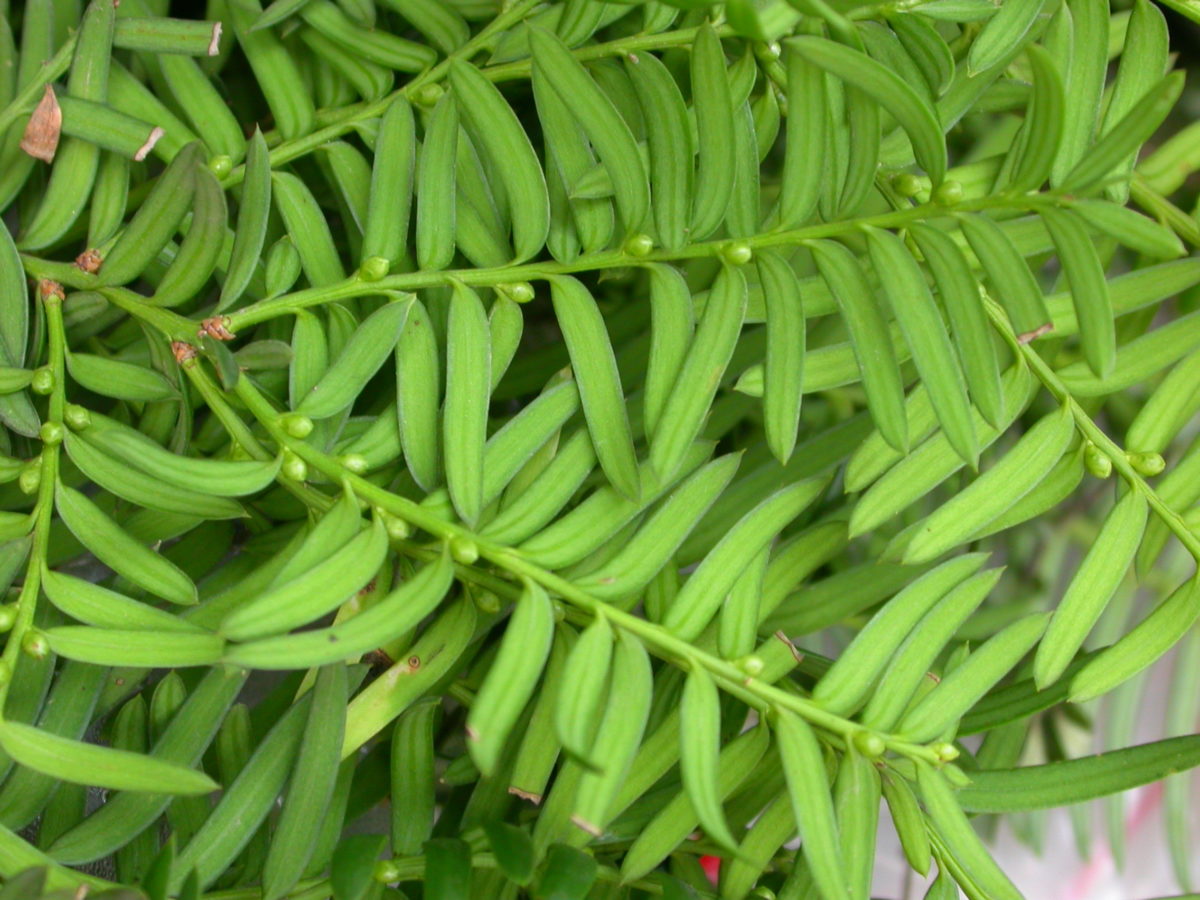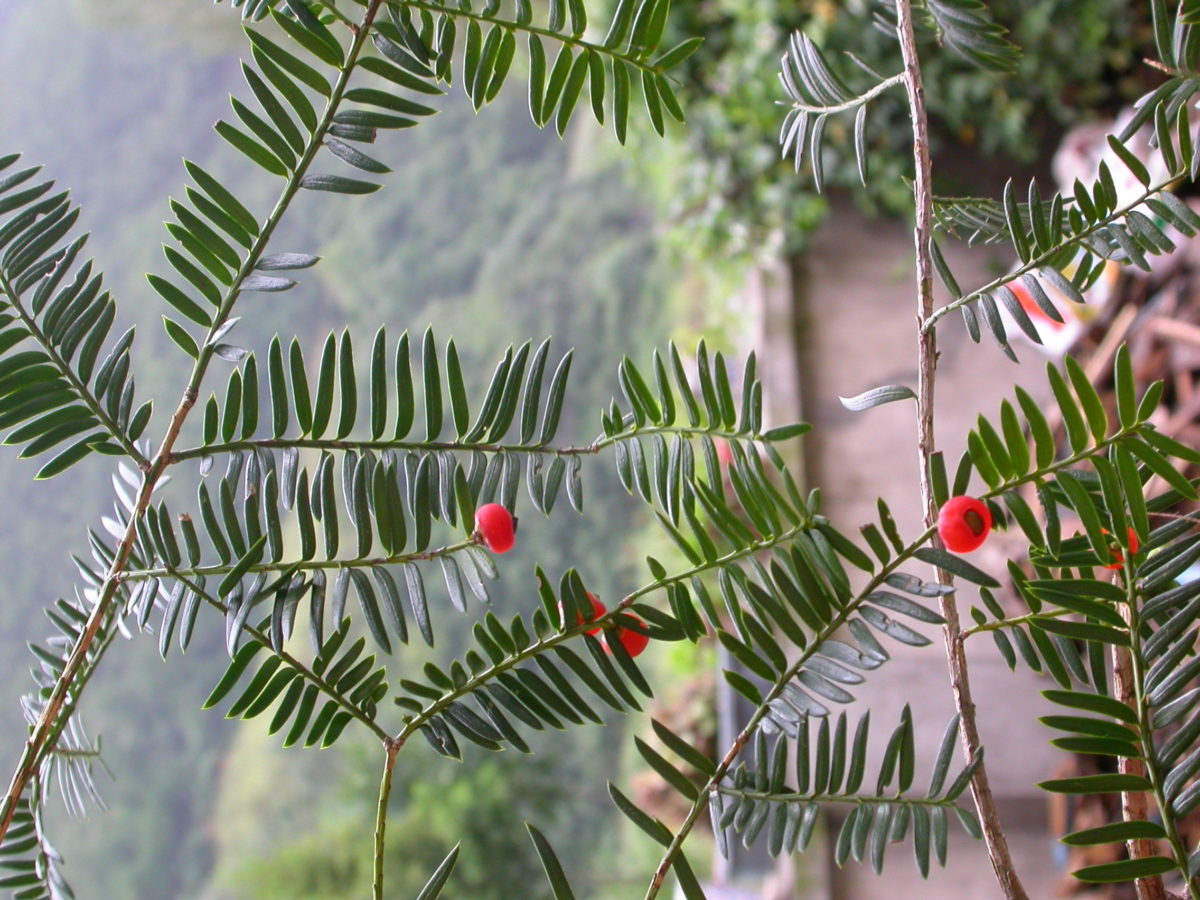Distribution
Native to China and Việt Nam.
China. It has been recorded from the following provinces: Anhui, Chongqing, Fujian, S Gansu, N Guangxi, Guizhou, W Hubei, NE Hunan, S Shaanxi, Sichuan, E Yunnan and Zhejiang.
Việt Nam. It is known from Hagiang, Hoa Binh and Son La in northern Việt Nam.
total extent of occurrence is in excess of 20,000 km2. No estimates are available for the area of occupancy. Its is also know from more than 10 locations. The population in China is estimated to be around 800,000 individuals, of which there may be up to 80,000 mature individuals scattered over a large area. In Viet Nam the subpopulation is very small. The number of mature individuals is known to be decreasing throughout its range and there is little regeneration. Generation lengths are estimated to be at least 40 years based on this species' slow growth rates and longevity (1000 years).
Habitat and Ecology
Taxus chinensis occurs in evergreen and deciduous broad-leaved forests, frequently along streams. Its altitudinal range in China is from 1100m to 2700 metres above sea-level. The undergrowth is often dominated by bamboo thickets. In Việt Nam, it occurs in the northern limestone karst formations on steep slopes and on ridges in subtropical to tropical evergreen forest at altitudes between 900 to 1500 metres above sea-level. Here it is associated with the conifers Pseudotsuga sinensis, Pinus fenzeliana (syn. P. kwangtungensis), Fokienia hodginsii, Tsuga chinensis, Podocarpus pilgeri, Nageia fleuryi, and more locally Xanthocyparis vietnamensis. There are numerous small-leaved angiosperm trees and shrubs and an abundance of epiphytes due to high rainfall and frequent fog. This species does not form dense stands in any part of its range and tends to be sporadic in its occurrence in forests.
Human Uses
The wood of this species is used in China in construction, cooperage, for the making of furniture, and for wood carving and turning. In Việt Nam it is also used for irrigation paddles in rice fields. Extracts of many parts of the plant (roots, wood, bark and leaves) are used in traditional Chinese medicine, while in modern times it has been exploited for the production of anti-cancer drugs such as Taxol®) which are derived from the bark and leaves. The seeds contain oils which are also extracted, but treatment is required to neutralize the poisonous alkaloids. In horticulture it has been used in bonsai and to a limited extent as a garden shrub. It is doubtful whether this species is in cultivation outside China and Việt Nam.
Conservation Status
Global status
Endangered A2d
Global rationale
Taxus chinensis has undergone a large population reduction since the 1990s as a result of the discovery of the importance of this species for treating cancer. There are attempts now to propagate this species to meet the demand, however, exploitation of wild plants is likely to continue but probably at a lower rate than before. The species is listed as Endangered.
Global threats
Exploitation has reduced the population in many areas of China although the species is still wide-spread. Logging and deforestation in Việt Nam may have had a bigger impact as populations there are small; it may have reduced the species to some extent to the less accessible places. Exploitation of its bark and foliage for chemical/medical purposes has caused this species to be listed on CITES Appendix II. Harvesting can only be sustained from plantations, as indiscriminately stripping trees of bark and foliage kills the tree. In China such plantations have been established in several places. The species has poor regeneration, hence any exploitation would deplete the population.
Conservation Actions
In China, this species (under the name of Taxus wallichiana var chinensis) is listed as a Category 1 protected species means that exploitation is prohibited (Mulliken & Crofton, 2008). It has also been nationally assessed as Vulnerable on the China Species Red List (Wang & Xie, 2004). All forms of harvesting wild plants was specifically banned in 2003. In Việt Nam, this species is listed on Appendix II of the Decree NO. 3212006lND-CP (Government of Việt Nam 2006) that covers the management of endangered, precious and rare forest plants and animals. As a result its exploitation for commercial purposes is restricted. Internationally, this species is listed on CITES Appendix II. Plantations have been established in China with the aim to harvest foliage for pharmaceutical purposes. It is also known from a number of protected areas throughout its range.





